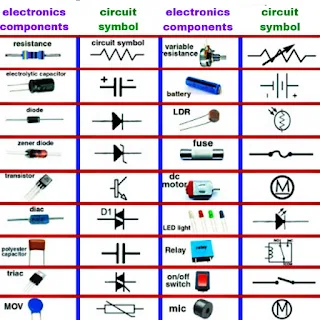BC108 Transistor Datasheet, Pinout, and Applications
Transistors are fundamental electronic components that play a crucial role in modern electronic devices and circuits. Among the many types of transistors available, the BC108 is a commonly used NPN bipolar junction transistor (BJT) known for its versatility and reliability. In this blog post, we will delve into the BC108 transistor, exploring its datasheet, pinout, and various applications.
Understanding the BC108 Transistor
The BC108 is a small-signal NPN transistor primarily designed for low to medium power amplification and switching applications. It is part of the BC1xx series of transistors, which includes the BC107 and BC109, each with slight variations in electrical characteristics. The BC108 transistor is widely available and reasonably priced, making it a popular choice for hobbyists and professionals alike.
BC108 Transistor Datasheet
Before diving into its applications, let's take a look at the key specifications of the BC108 transistor as outlined in its datasheet:
**1. Electrical Characteristics:**
- **Collector-Base Voltage (V<sub>CB</sub>):** 30V
- **Collector-Emitter Voltage (V<sub>CE</sub>):** 25V
- **Emitter-Base Voltage (V<sub>EB</sub>):** 5V
- **Collector Current (I<sub>C</sub>):** 100mA
- **Power Dissipation (P<sub>TOT</sub>):** 250mW
- **DC Current Gain (h<sub>FE</sub>):** 100 - 630 (varies with collector current)
- **Transition Frequency (f<sub>T</sub>):** 150MHz
**2. Pin Configuration (Pinout):**
The BC108 transistor has three leads or pins, each with its unique function:
- **Collector (C):** This is the power supply pin for the transistor and is typically connected to the positive supply voltage in most applications.
- **Base (B):** The base pin controls the transistor's switching or amplification action. A small current applied to the base terminal can control a much larger current between the collector and emitter.
- **Emitter (E):** The emitter is the output pin. It allows the current to flow from the collector to the emitter when the transistor is in the "on" state.
BC108 Transistor Pinout
Here is a graphical representation of the BC108 transistor pinout
Applications of BC108 Transistor
The BC108 transistor finds applications in various electronic circuits, thanks to its small size, low cost, and reasonable performance characteristics. Here are some common uses of the BC108 transistor:
### 1. Signal Amplification
One of the primary applications of the BC108 transistor is in signal amplification. By configuring it in a common-emitter amplifier circuit, you can increase the strength of weak electrical signals. This is useful in audio amplifiers, radio receivers, and various sensor interfaces.
### 2. Switching Applications
The BC108 can also be used as a switch in digital logic circuits. When used in a saturated mode, it allows a relatively large current to pass through the collector-emitter path, making it suitable for applications like turning on and off small motors, relays, or LEDs.
### 3. Oscillator Circuits
The BC108's high transition frequency makes it suitable for use in RF (radio frequency) oscillator circuits. It can generate high-frequency oscillations required for various radio communication applications.
### 4. Pulse Shaping
In pulse shaping circuits, the BC108 transistor can be used to shape or condition input pulses. This is useful in applications like pulse-width modulation (PWM) and signal waveform manipulation.
### 5. Voltage Regulation
By employing the BC108 in a voltage regulator circuit, you can maintain a stable output voltage despite variations in the input voltage or load. This is crucial in power supply applications.
## Conclusion
The BC108 transistor, with its compact size and versatile characteristics, is an essential component in the world of electronics. Whether you're amplifying signals, switching loads, or generating high-frequency oscillations, the BC108 can serve as a reliable building block for a wide range of electronic circuits. Understanding its datasheet and pinout is the first step toward harnessing its potential in your projects. As technology continues to advance, transistors like the BC108 remain indispensable tools for electronic engineers, hobbyists, and enthusiasts.










